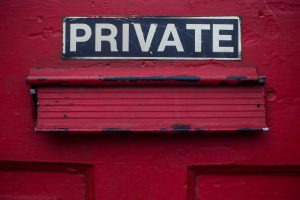Foreclosure Bargains: Risks and Rewards of Distressed Properties
Welcome to the world of real estate investing, where finding a good deal can make or break your profits. In recent years, one type of investment property has become increasingly popular among investors – distressed properties. These are homes that have gone through the foreclosure process and are now available for purchase at a lower price. While the idea of getting a “bargain” on a property may sound enticing, there are risks and rewards that come with buying distressed properties. In this article, we will delve into the world of foreclosure bargains and explore the potential risks and rewards of investing in distressed properties.
What are Distressed Properties?
Distressed properties are real estate properties that have been foreclosed on by the lender due to the failure of the borrower to make mortgage payments. These properties are commonly referred to as “foreclosures” and are usually auctioned off to the highest bidder. If the property does not sell at the auction, it becomes a Real Estate Owned (REO) property, which is then sold by the lender directly to the public.
Why do Investors Buy Distressed Properties?
The main reason investors are drawn to distressed properties is the potential for a good deal. Since the lender just wants to recoup their losses, they often sell these properties at a discounted price. This means investors can purchase a property for below market value, which can result in significant profits when the property is sold or rented out.
High Profit Potential
In addition to buying a property at a discounted price, investors also have the opportunity to add value to the property through renovations and improvements. This can significantly increase the property’s value, allowing investors to sell or rent it out for a higher price.
Increased Inventory
With the rise of foreclosures in recent years, there has been an increase in distressed properties available for investors to purchase. This gives investors a wider selection to choose from and increases their chances of finding a good deal.
What are the Risks of Buying Distressed Properties?
While the potential for high profits can be alluring, it’s important to also consider the risks involved when buying distressed properties.
Hidden Costs
When purchasing a distressed property, investors often overlook potential hidden costs. These can include repairs, liens on the property, or any back taxes that may be owed. It’s essential to thoroughly research the property and budget for these expenses to avoid any surprises later on.
Competitive Market
As more investors jump on the bandwagon of buying distressed properties, the market has become increasingly competitive. This can make it challenging to find a good deal, as investors are often willing to pay more for a property to secure it.
Uncertainty of Property Condition
Since distressed properties have gone through the foreclosure process, they are often in poor condition. This can make it challenging to assess the true value of the property and can result in unexpected repair costs for investors.
Tips for Investing in Distressed Properties
Now that we’ve explored the potential risks and rewards of buying distressed properties, here are some tips to help you navigate this investment strategy successfully:
Do Your Research
The key to finding a good deal on a distressed property is to do your research. This includes researching the property’s history, potential hidden costs, and the current market conditions. It’s also essential to have a good understanding of the foreclosure process and the laws and regulations in your area.
Work with a Real Estate Agent
Working with a real estate agent can be beneficial when buying a distressed property. They have expertise in the market and can help you find suitable properties that fit your criteria. They can also negotiate on your behalf and give you advice on the property’s potential value.
Get an Inspection
Before purchasing a distressed property, it’s crucial to get a thorough inspection done by a professional. This will help identify any hidden issues and give you an accurate estimate of the property’s repair costs.
Have a Contingency Plan
While the goal of buying a distressed property is to make a profit, it’s essential to have a contingency plan in case things don’t go as planned. This can include setting aside extra funds in case of unexpected repairs or having a backup plan for renting out the property if it doesn’t sell.
Conclusion
Investing in distressed properties can be a lucrative venture, but it comes with its own set of risks and rewards. It’s essential to thoroughly research the property and have a solid understanding of the market before making any decisions. With these tips in mind, you can navigate the world of foreclosure bargains and potentially turn a good deal into a successful investment.











